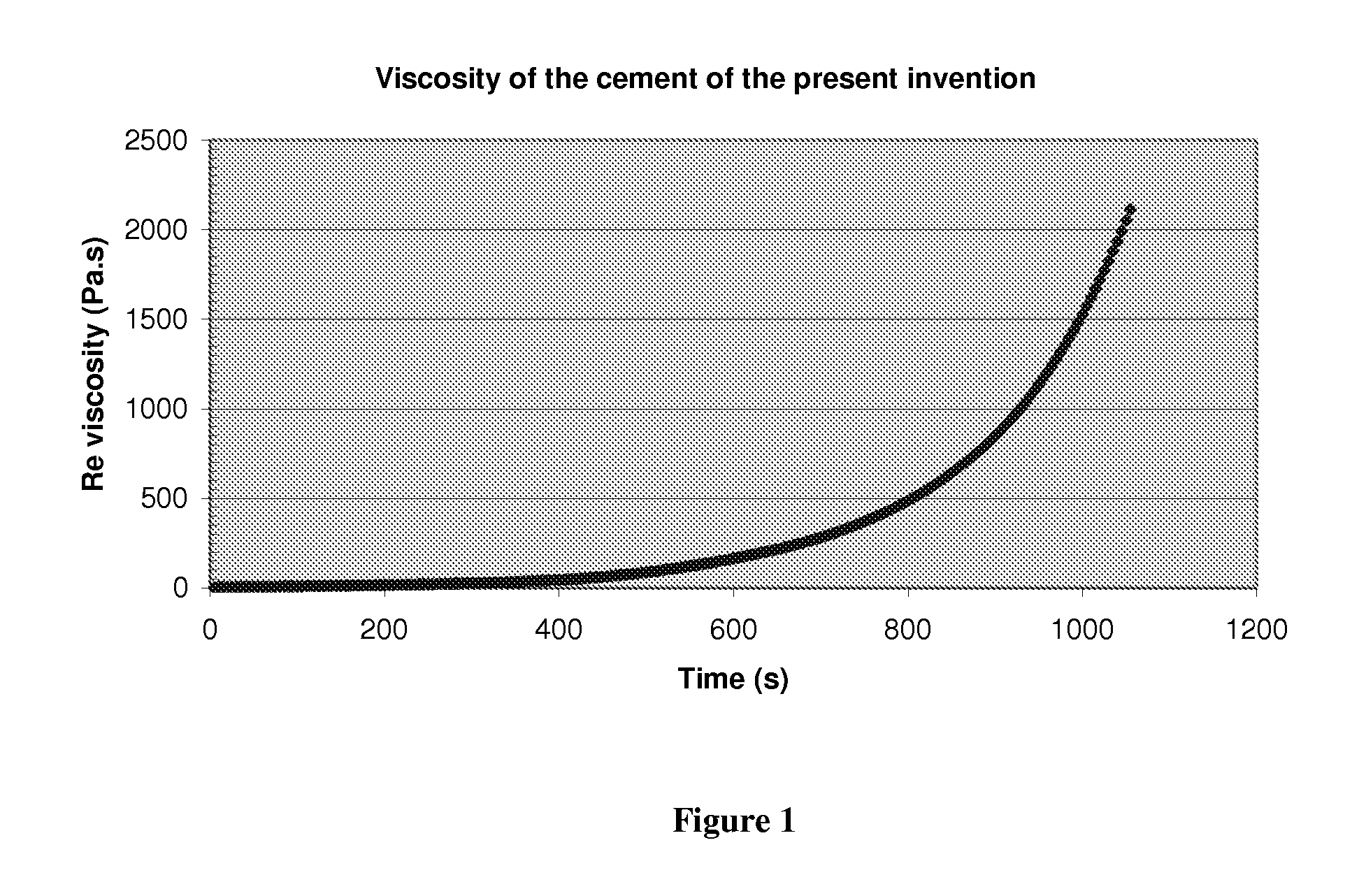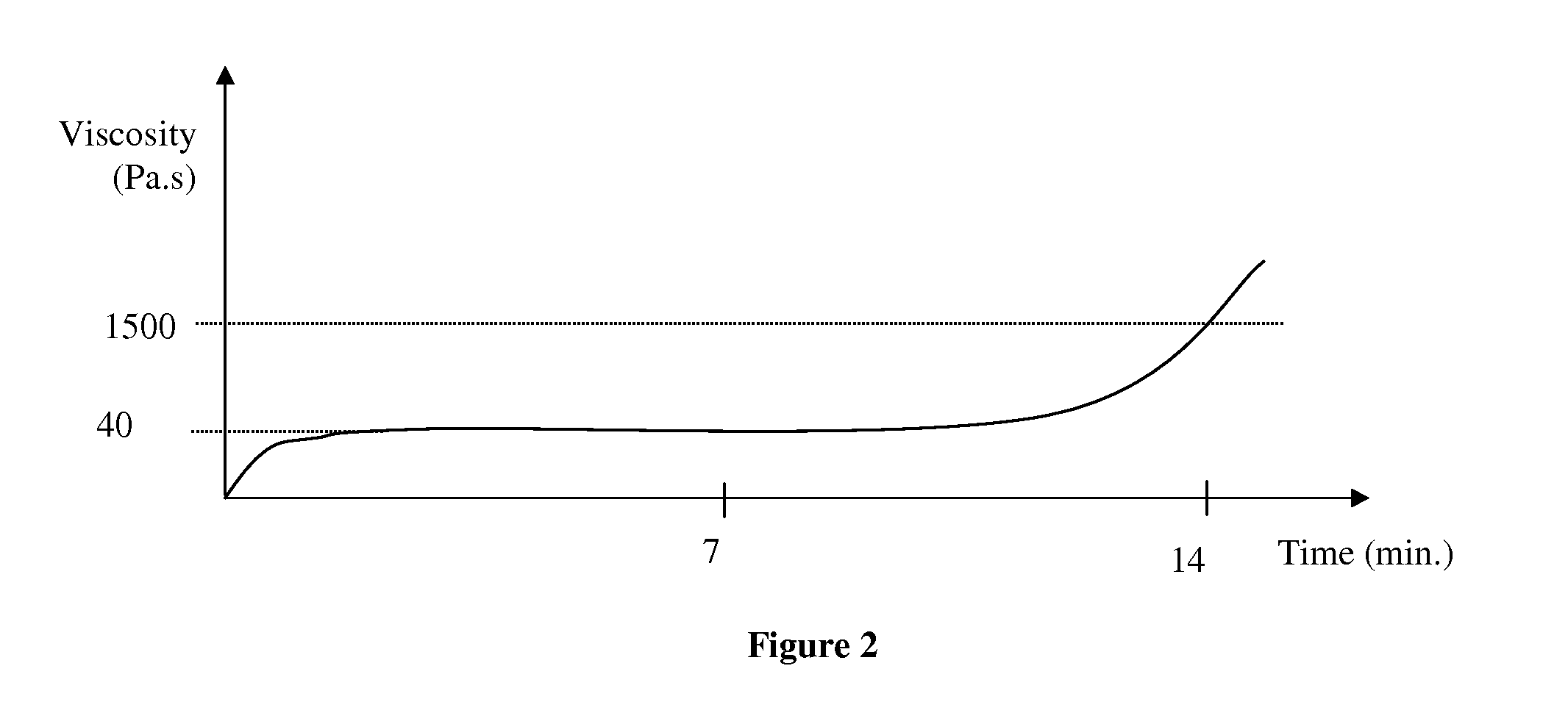Polymer cement for percutaneous vertebroplasty and methods of using and making same
a technology of polymer cement and percutaneous vertebroplasty, applied in the field of polymer cement, can solve the problems of significant side effects, poor overall survival rate, and concern for accompanying risks
- Summary
- Abstract
- Description
- Claims
- Application Information
AI Technical Summary
Benefits of technology
Problems solved by technology
Method used
Image
Examples
example 1
Binary Composition 1
[0076]
POWDER PHASE (% by weight)PMMA:64.41BPO:0.59BaSO4:25.00HAP10.00LIQUID PHASE (% by weight)MMA:97.60DMPT:2.40HQ:0.002with P / L = 1.41
example 2
Binary Composition 2
[0077]
POWDER PHASE (% by weight)PMMA:59.33BPO:0.54ZrO2:30.08HAP:10.05LIQUID PHASE (% by weight)MMA:97.60DMPT:2.40HQ:0.002with P / L = 1.57
example 3
Binary Composition 3
[0078]
POWDER PHASE (% by weight)PMMA:49.43BPO:0.45ZrO2:40.01HAP:10.11LIQUID PHASE (% by weight)MMA:97.60DMPT:2.40HQ:0.002with P / L = 1.47
PUM
| Property | Measurement | Unit |
|---|---|---|
| weight ratio | aaaaa | aaaaa |
| weight ratio | aaaaa | aaaaa |
| weight ratio | aaaaa | aaaaa |
Abstract
Description
Claims
Application Information
 Login to View More
Login to View More - R&D
- Intellectual Property
- Life Sciences
- Materials
- Tech Scout
- Unparalleled Data Quality
- Higher Quality Content
- 60% Fewer Hallucinations
Browse by: Latest US Patents, China's latest patents, Technical Efficacy Thesaurus, Application Domain, Technology Topic, Popular Technical Reports.
© 2025 PatSnap. All rights reserved.Legal|Privacy policy|Modern Slavery Act Transparency Statement|Sitemap|About US| Contact US: help@patsnap.com


